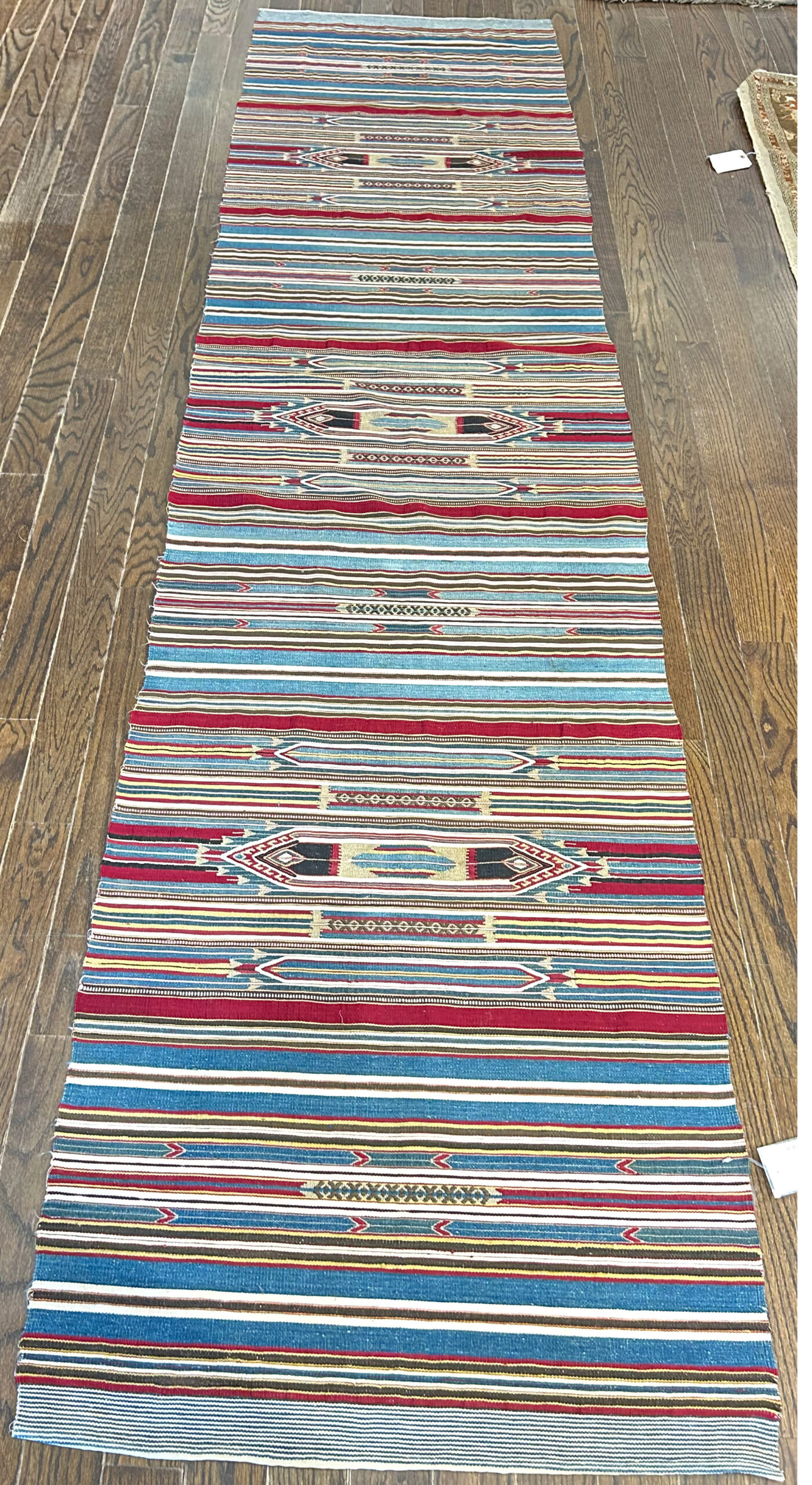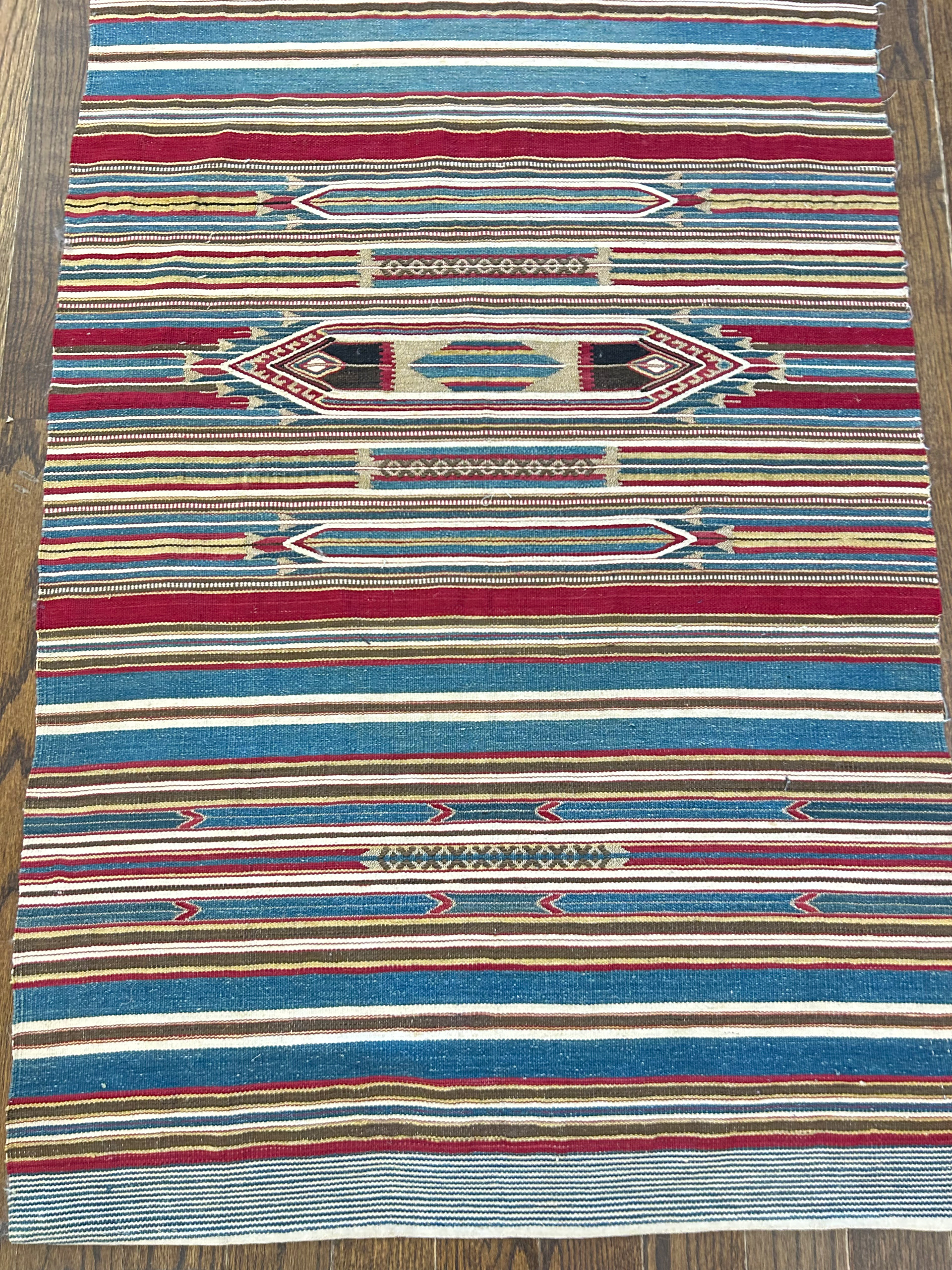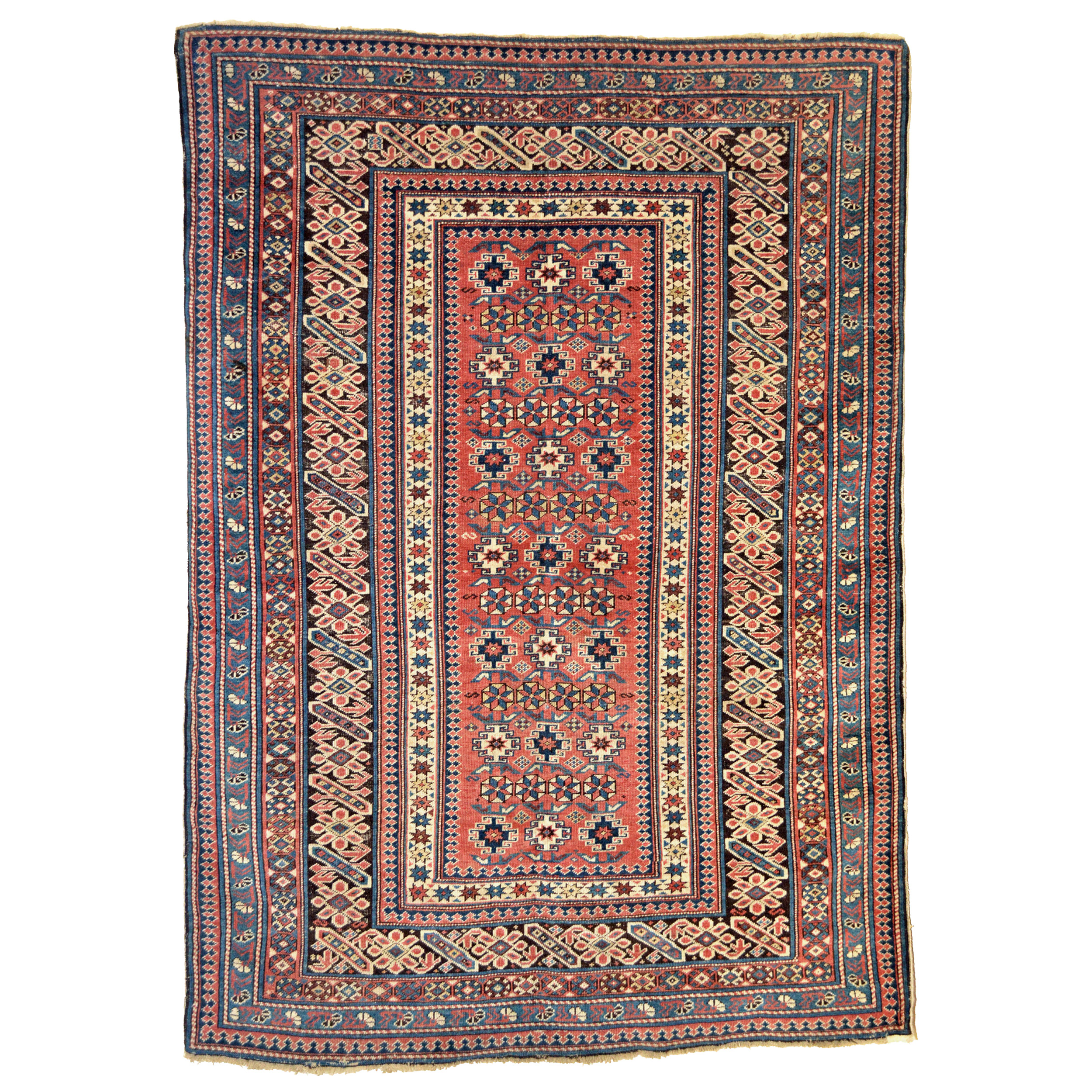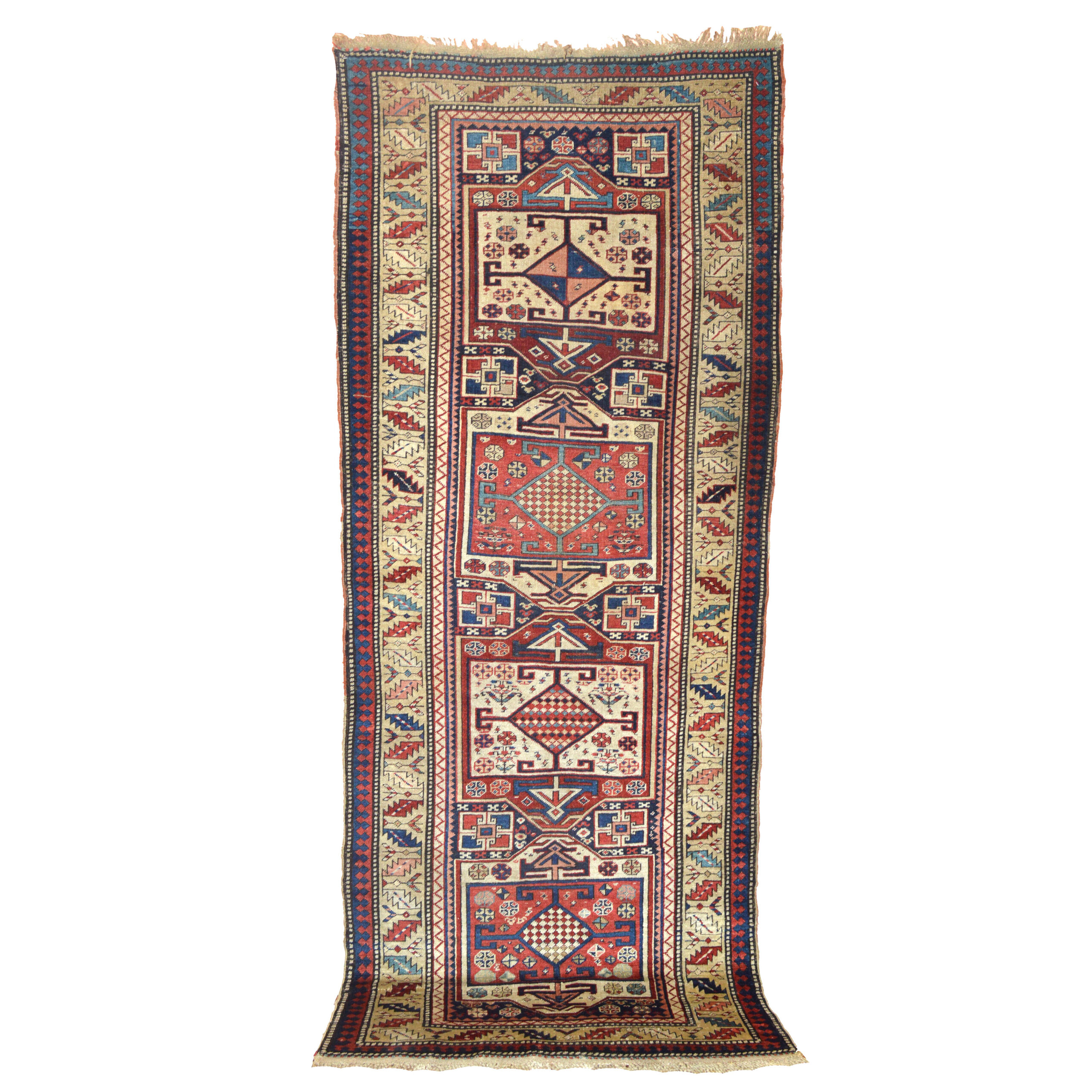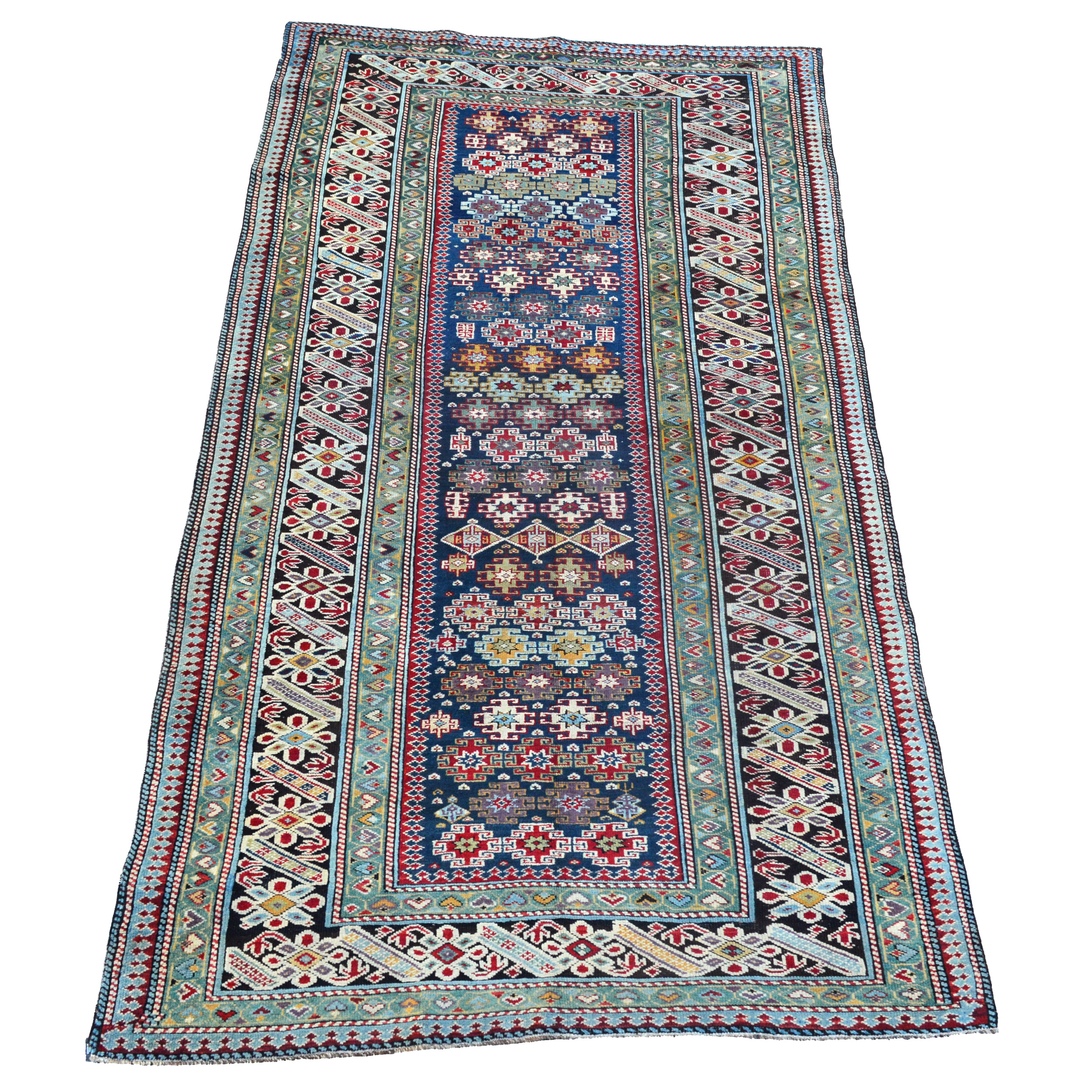2.8 x 10.9 Antique Armenian Kilim, Circa 1925
This extraordinary kilim (flat woven) rug was probably woven by an Armenian weaver living in Syria after the Turkish Genocide of Armenian people living in Turkey toward the end of the Ottoman Empire, circa 1915 – 1916.
According to the United States Holocaust Memorial Museum, the Turkish Genocide of Armenian people is “Sometimes called the first genocide of the twentieth century, the Armenian genocide refers to the physical annihilation of Armenian Christian people living in the Ottoman Empire from spring 1915 through autumn 1916. There were approximately 1.5 million Armenians living in the multiethnic Ottoman Empire in 1915. At least 664,000 and possibly as many as 1.2 million died during the genocide, either in massacres and individual killings, or from systematic ill treatment, exposure, and starvation.”
During the period of the Armenian Genocide, which took place during World War I in Turkey, circa 1915 – 1916, some Armenian people fled to Syria, including a dear friend of ours. The Turkish government, who still sometimes denies the Armenian genocide took place, have in recent years often persecuted Kurdish people living in Turkey, as well.
According to the United States Holocaust Memorial Museum, and given the times we currently live in, it is important to note that the Muslim Turks, in addition to the massacres they committed and the deaths that resulted from their terrible treatment of Christian Armenians, took steps where, “In addition, tens of thousands of Armenian children were forcibly removed from their families and converted to Islam.”
During a similar era, according to the Greek Genocide Resource Center, “Between 1914-1923, the Ottoman Empire (today Turkey) under two successive regimes, carried out a systematic and violent campaign of extermination against its native Greek subjects.” These atrocities, similar to those committed against Christian Armenians living in Turkey, where committed by Muslim Turks against Greek Christians.
It is important to understand the history of Islam and, especially in recent years the atrocities committed by Islamic groups ranging from Al Qaeda, ISIS, the Taliban, Hezbollah, Islamic Jihad, Hamas and the official governments of Syria, Iran, Saudi Arabia and other Islamic, or Islamic dominated countries, to destroy the World Trade Centers in New York, repeatedly seek to destroy Israel and the Jewish people, and to continue to persecute Christians and people of other religions in one country after another. That many Americans, many with little if any grasp of history from Ancient times to current times, now fall for the propaganda of Hamas, the United Nations and other organizations who would like to see the destruction of Israel and the Jewish people, is deeply troubling and shows that lessons were not learned from previous genocides, including the German/Austrian Holocaust in the 1930s and 1940s where six million Jews and many other people were killed in an attempt to destroy the Jewish religion and people.
On a brighter note, this kilim is a remarkable testament to not only the skill but resilience of an Armenian refugee living in Syria, probably sometime in the 1920s.
Helen and I have never seen anything like this but a close friend of ours, a rug dealer of Armenian heritage and very active in the Armenian church in America, has owned two related weavings, though in different sizes.
Extremely finely woven, this kilim, primarily made of wool, also has silk and metal thread. It was almost certainly displayed on a wall horizontally and still retains small metal loops. It is in exceptional condition with magnificent colors.
True textile art, this piece would enhance any rug or textile collection.
To view a detail photo, place cursor on image and use arrows.
